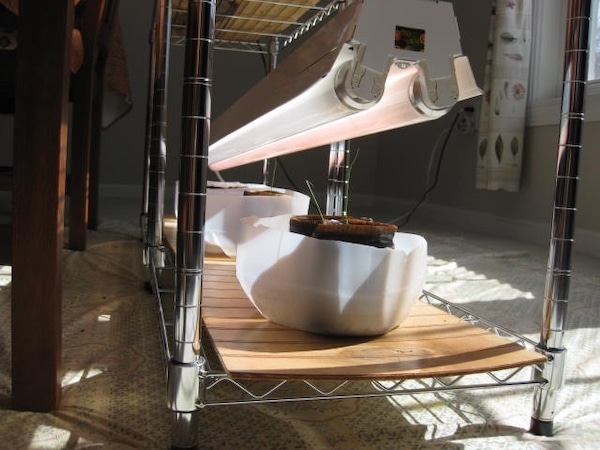Updated: November 26, 2020
D eciding when to start seedlings indoors can be a little bit tricky. Timing is important because you’d like the seedlings to be at the optimum size when it comes time for transplanting.
It’s best if the root system is well established but not root bound.
Related: What’s the Best Planting Dates Calculator
Conventional advice is that you backward schedule from the date that you’d like to plant outside.
In other words, you subtract the number of days that the seedling will take to grow to optimum size from the outside planting date. For example:
Conventional timing, starting tomato seedlings
- Goal: Plant 6 tomato seedlings outside
- Target outside planting date: May 1
- Start between 24 and 30 seedlings
- Start all seedlings: March 15, six weeks before outside planting date
- Plant best-looking seedlings outside May 1
If all goes as expected, this is a good plan. Even if some of the seedlings don’t work out, there’s redundancy so there’s a good chance that enough plants will be in excellent condition.
Let’s take a sec to get the legal words out of the way. This article may contain affiliate links. That means if you click and buy from my partners, I will make a tiny amount of money at no cost to you. This in no way affects my recommendations.
Of course, one of the difficult decisions of this is figuring out how long it will take for seedlings to grow to optimum size. Even if you make a good estimate, it’s rare that everything works out perfectly.
What if it’s too cold and rainy to plant when the seedlings are ready? That may require that you repot the seedlings at the last minute.
Worse: What if dampening off hits and all the seedlings die?
One problem I’ve faced in the past is the organic potting soil turned out to be bad.
When I repotted the seedlings, things started to go downhill. I had no choice but to buy seedlings at the garden center.
When to Start Seedlings Indoors
When growing vegetables, as in much of life, things don’t necessarily turn out the way that you plan.
What is the most famous farmer saying of all time? Don’t put all your eggs in one basket. This is a good rule for seedlings, too.
I suggest you succession plant your seedlings so that you are spreading out your risk over time. This gives you the ability to adjust if needed.

Here how:
Unconventional timing, starting tomato seedlings
- Goal: Plant 6 tomato seedlings outside
- Target outside planting date: May 1
- Start 5 plants on March 1
- Start 5 plants on March 8
- Start 5 plants on March 15
- Start 5 plants on March 21
- Start 5 plants on March 28
- Pick best-looking seedlings for planting May 1
With this method you’re protected over time. If, for example, dampening off hits the March 1 seedlings after a couple of weeks, you have time to change your seed starting mix or use chamomile tea to try and mitigate the damage on the next batch.
Or, if the weather is cold and rainy the week of May 1, then you can wait a week and plant the next batch of seedlings, which will be at the optimum size for transplanting.
Timing seedlings can be tricky. Plants may grow faster or slower than you expect.
More often than not, the weather isn’t right when it comes time to plant. Sometimes, maybe because of global warming, the weather is right sooner than you expected.
By spreading out the planting dates of your seedlings you have more flexibility to adapt if something doesn’t go according to plan.
Related articles that might interest you:
- Make Your Own Seed Starting Mix
- Build an Indoor Seedling Starting Unit for Not Much Money
- Free Seeds from the U.S. Government
Suburban Hobby Farmer is a participant in the Amazon Services LLC Associates Program, an affiliate advertising program designed to provide a means for sites to earn advertising fees by advertising and linking to amazon.com.